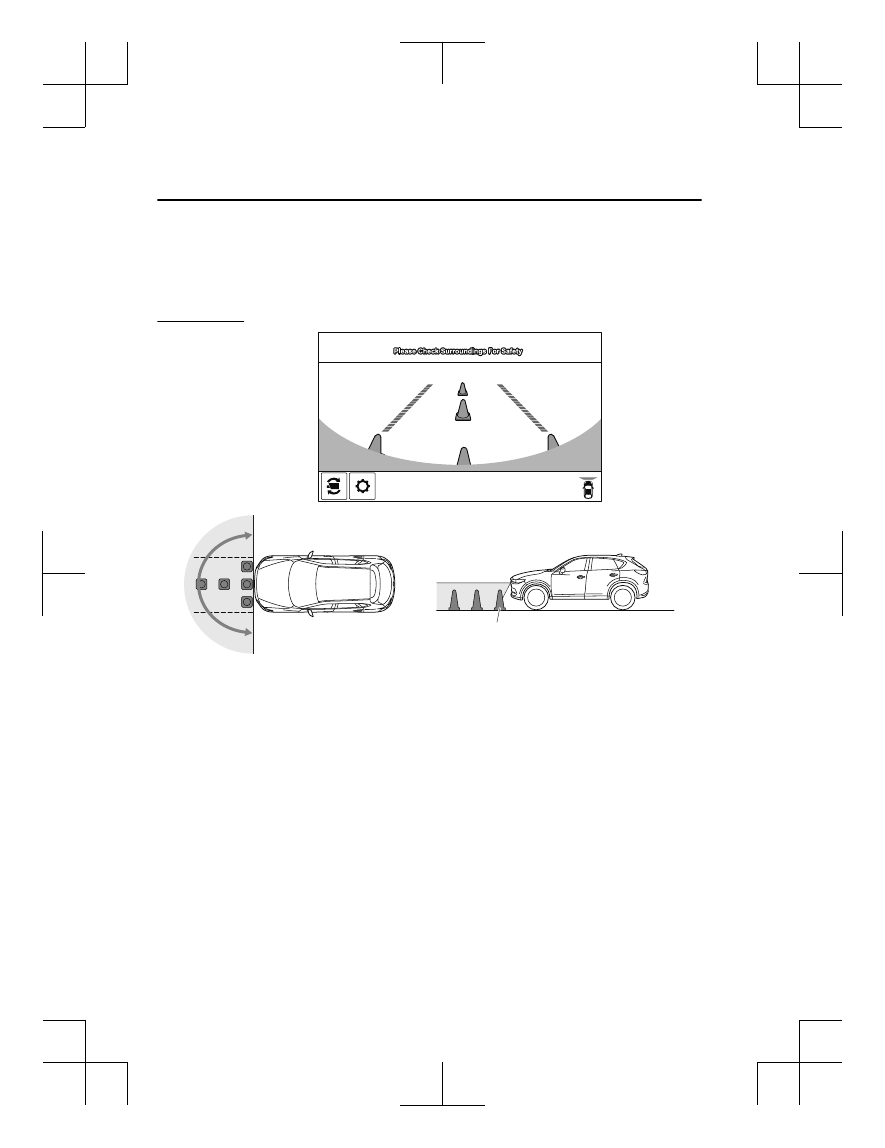Mazda CX-5 (2019 year). Manual - part 22

▼ Front Wide View
Use the front wide view to assist in checking the safety of the surrounding area when
accelerating from a stop or entering a T-shaped intersection and intersection.
Display range
(Actual condition)
(Screen display)
Target object
When Driving
i-ACTIVSENSE
4-190
CX-5_8HE3-EA-18I_Edition1
2018-6-29 13:44:47